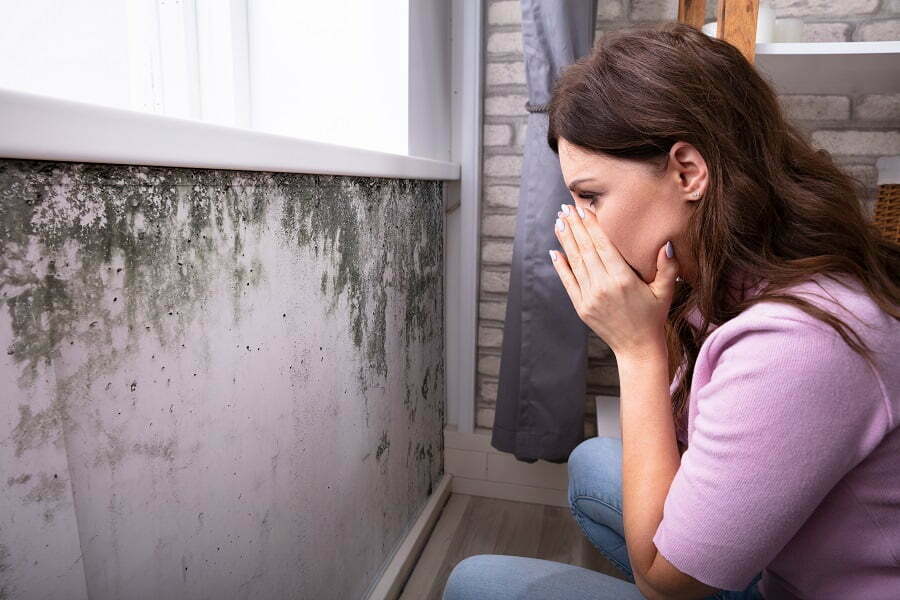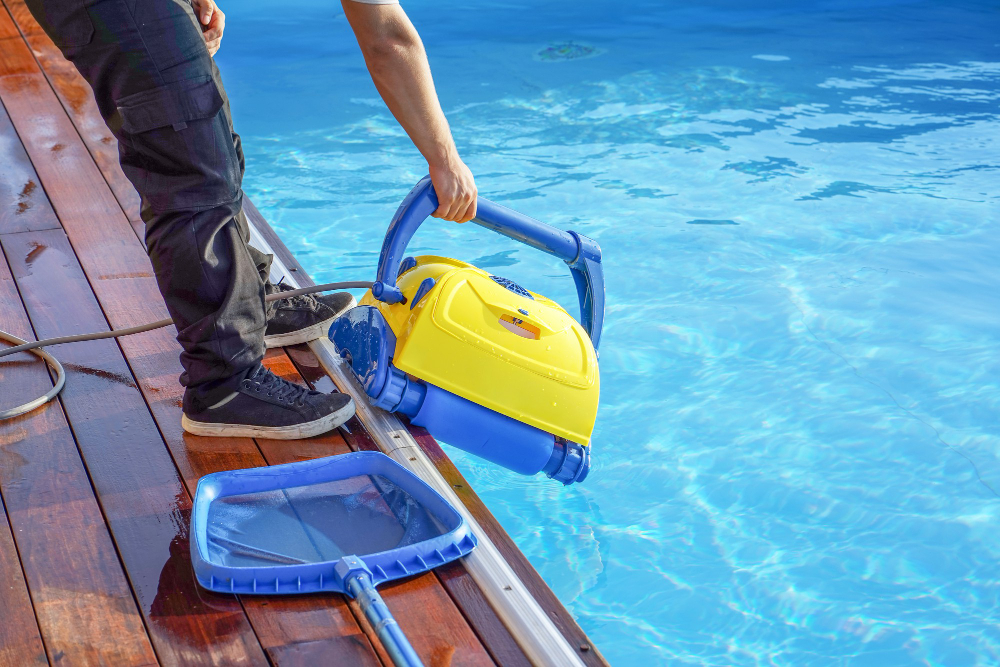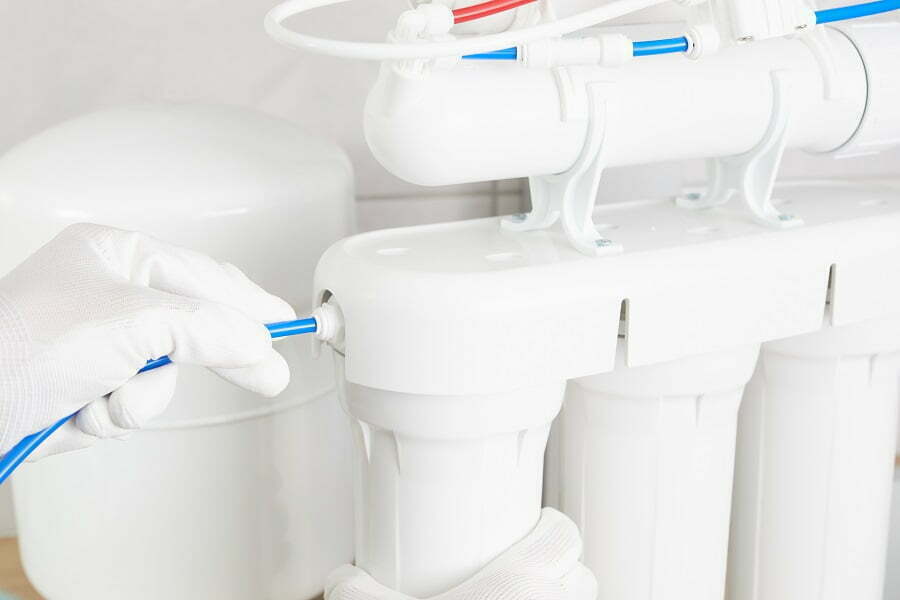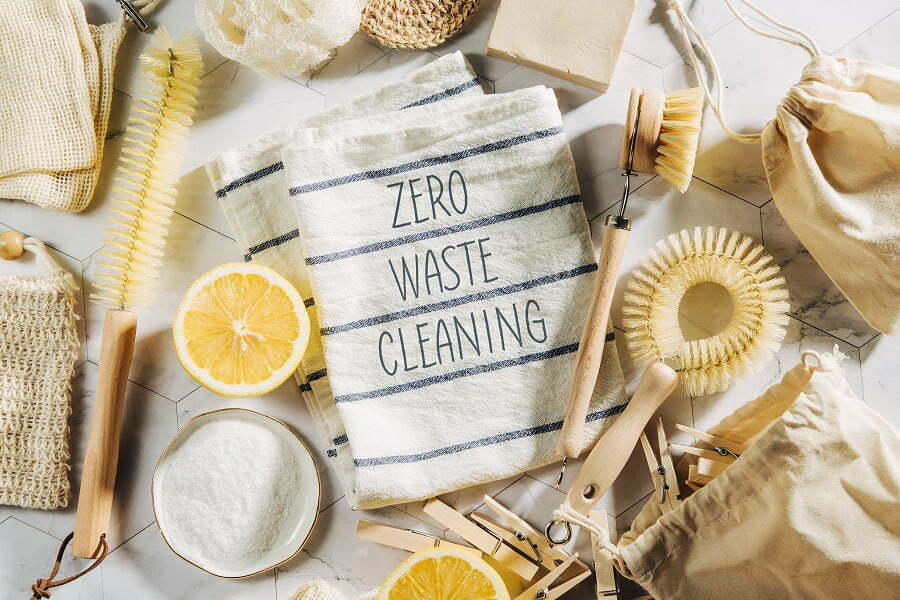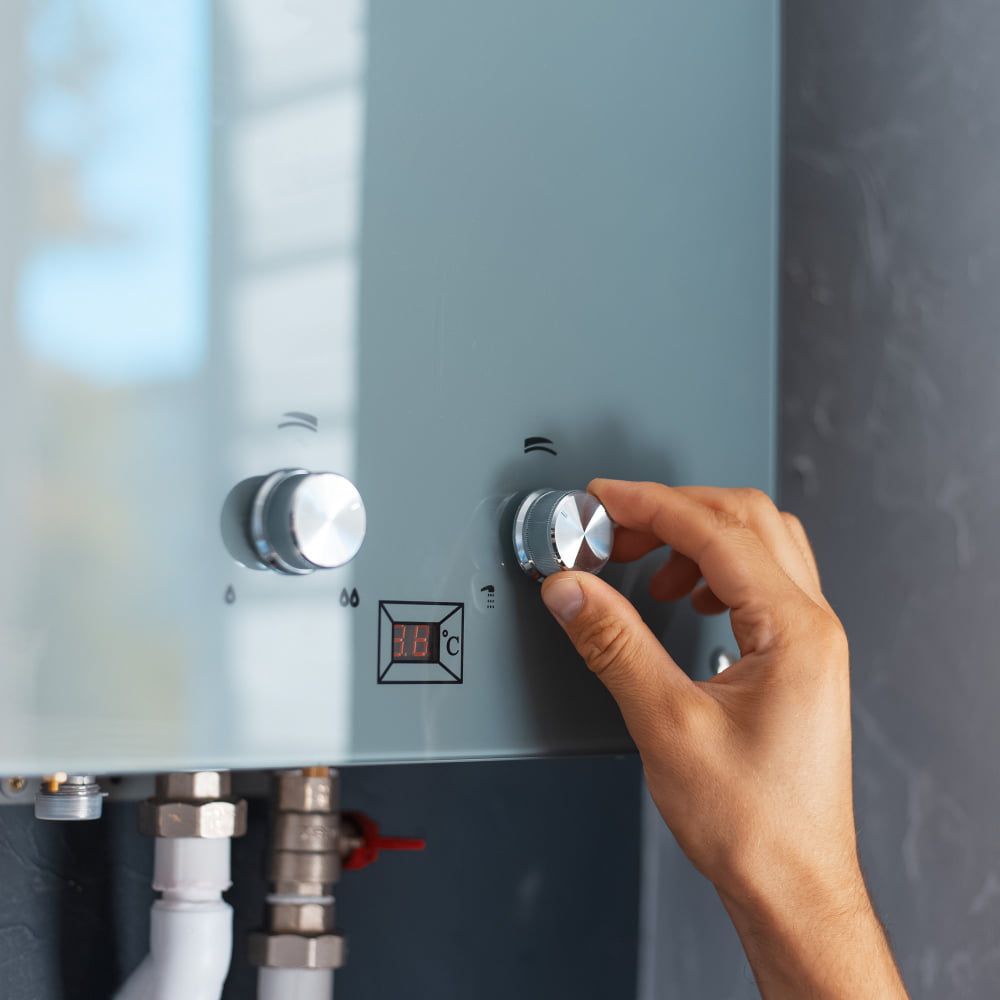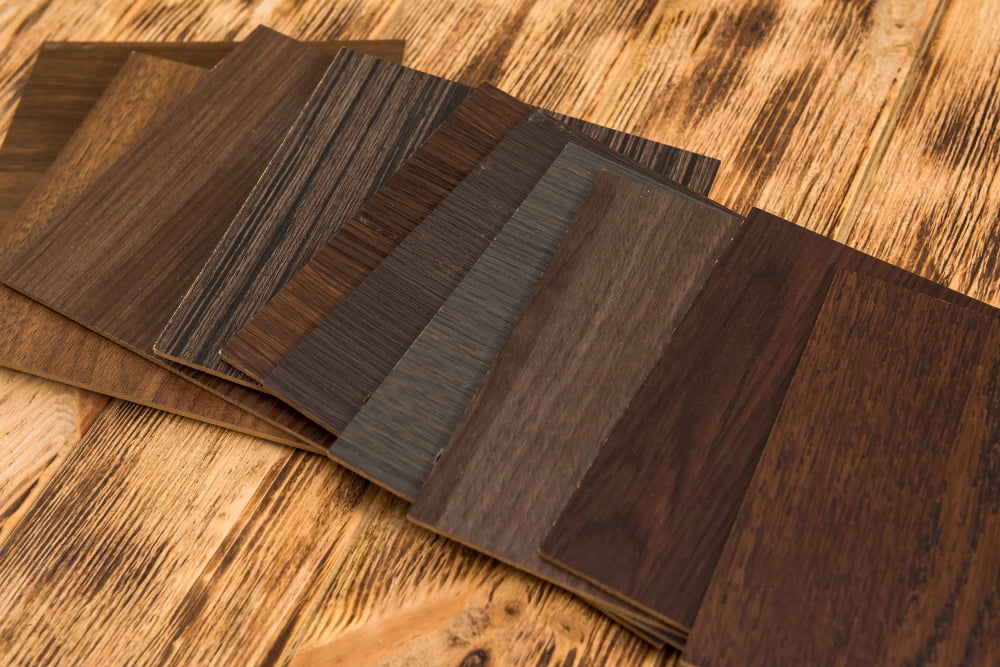Last updated on
If you want to keep your pool water healthier for you and your kids, natural cleaning methods are much better used. Here are 5 alternatives to chlorine.
Cleaning pools using chlorine is the standard for most pool owners today. Gently, there are a lot of things that go under the radar for pool owners when they use this chemical.
While chlorine does eliminate algae and keep pools clean from a bird’s-eye view, it also acts as a double-edged sword. Here’s a list of the problems that chlorine can cause in the long run:
- Breathing problems: Swimming constantly in chlorine-filled water can eventually damage your lungs. This issue can be exacerbated if the chlorine-filled water is ingested while we’re swimming. You need to ensure that neither your kids nor pets dive into these waters during this time.
- Eye redness or irritation: make sure not to swim in the pool after using chlorine as doing so can cause eye redness or irritation and dryness to the point where your eyes could get bloodshot.
- It harms the environment: Although chlorine on its own doesn’t necessarily cause harm to the environment, it quickly combines to produce chemicals like dioxins that eventually pollute water, mostly pool water.
Chlorine can also result in:
- Dry skin
- Brittle hair
- Destroys the vital gut flora (an important part of our immune system)
- Accelerates the risk of bladder cancer
- Decrease thyroid function
- Alters the hormone function in young boys
Besides that, chlorine is especially harmful to anyone suffering from allergies or asthma and can even aggravate their symptoms.
So instead, wouldn’t it be better to try a natural alternative? We’ve gone out of our way to add several natural options that you can use to clean your pool water without suffering any of the aforementioned adverse effects.
Here are the following natural cleaning agents that you can use to make your pool cleaner and healthier:
Hydrogen Peroxide
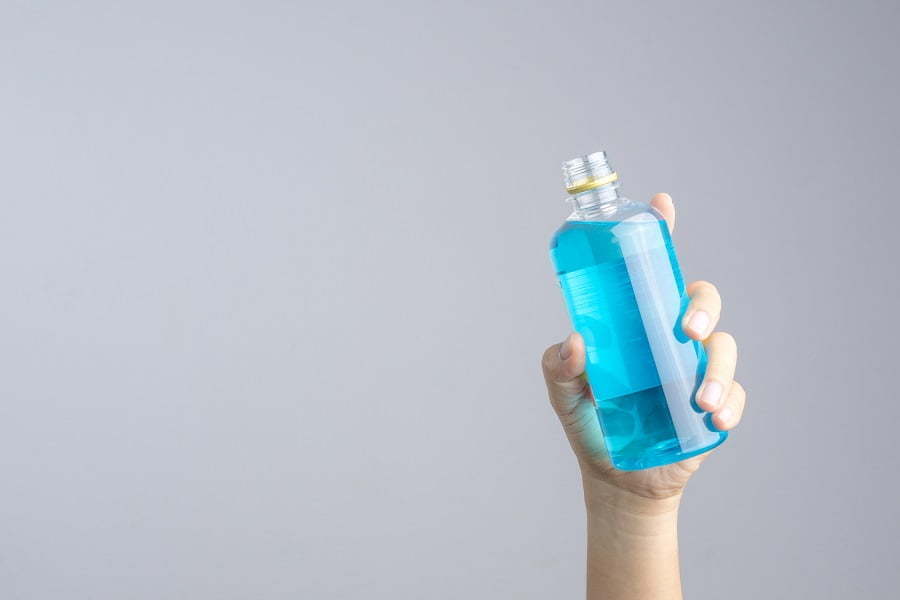
Unlike chlorine, hydrogen peroxide is a natural chemical compound produced within the human body and exists in rainwater. The role of hydrogen peroxide within our body is to ensure our cells function properly and healthily. As a matter of fact, most cancer patients swim in hydrogen peroxide-filled pools for extra therapy.
Hydrogen Peroxide acts as a powerful oxidizer, even more so than chlorine itself. After filling your pool with this chemical compound and exposing the pool to direct sunlight, hydrogen peroxide destroys the nutrients that algae and bacteria feed on. Upon doing this, you’ll have a natural swimming pool in your backyard that is virtually free of chloramines, algaecides, and chlorine. Apart from that, you’ll also experience other health benefits when swimming in a pool full of hydrogen peroxide, including better cell function, smoother skin, and luscious hair.
To clean the pool, you’ll need 35% of hydrogen peroxide, which you can buy at pool supply centers, natural food stores, or even on the internet.
Baking Soda

That’s right! The very thing we use for baking cookies, and other confectionery treats to help us clean our pool water. You can help us do just that by mixing it with water to create a simple non-abrasive cleaning paste that will help give our pool tiles that well-deserved shine and eliminate grout. It can also be used on a stone or concrete pool deck. This is arguably the least expensive and most cost-effective way of cleaning the pool naturally.
Baking soda also increases the pool’s alkalinity, which is more affordable than many alkalinity increasers. For this, you’ll need to add 1.5 lb of baking soda for every 10,000 water gallons to boost the overall alkalinity by ten parts per million (PPM).
Add Some Plants
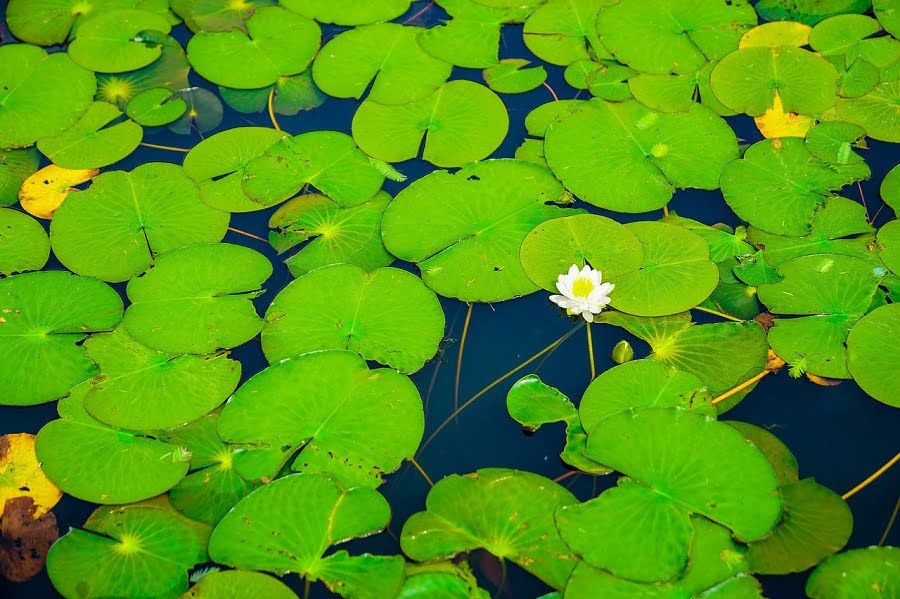
Leafy green plants provide oxygen, which in turn promotes the growth of good bacteria. This good bacteria feeds on algae and any other organic materials that are present in your pool. To achieve this effect, you’ll have to place your plants right by the edge of the pool.
If you’re more daring, you can turn one side of your pool into a natural water garden and have the plants placed directly in the water. This is a common thing to do in Europe as it makes living oxygenation and filtration system. If you own a saltwater pool, then you have to choose plants that enjoy such water.
Non-Chlorine Shock
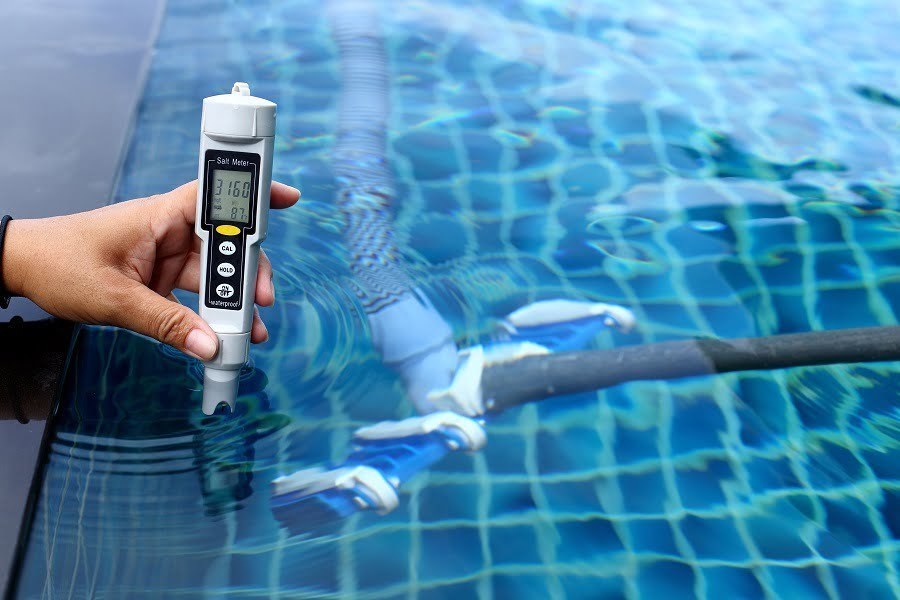
Non-chlorine shock is excellent for oxidizing organic pollutants like sunscreen, urine, and body oil. However, the only thing it can’t do is sanitize the pool by itself. That’s why you’ll need to use chlorine as an extra sanitation element to get the job done.
Oxidizing the pollutants will minimize chloramine levels (CC), allowing chlorine to work effectively. Non-chlorine shock is excellent for pools with a higher bather load or indoor pools. Because indoor pools have no direct contact with sunlight, the owners have no choice but to rely on non-chlorine shock.
The shock can also be used in hot tubs and spas to oxidize dead organic matter. This enables the sanitizer to eliminate adverse microorganisms such as algae and bacteria.
Borax
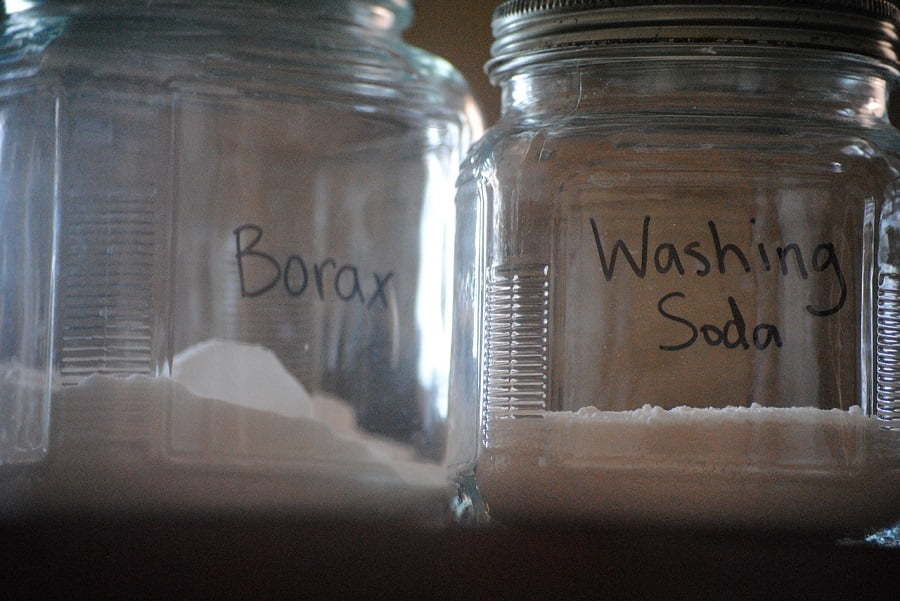
If you usually take care of the laundry, you may be familiar with Borax. It is said to be a laundry booster and is especially great for getting rid of nasty smells from clothes. Apart from that, it’s also a natural cleaner that can be used around your house, especially for your pool.
All you have to do is make a paste out of it by mixing it with water and then scrub out any slippery spots, sticky residue, or stains within or out of your pool. It may cost you a bit more than baking soda, but it’s still not as expensive as most of the other pool cleaning agents that you’ve heard of or used.
Apart from these above natural pool cleaners, you can also clear your pool with smart robotic pool cleaners such as the Polaris 9450 Sport. With this smart pool cleaner, you can save yourself time, effort, and maybe a little back pain.
Related reading:
Table of Contents
